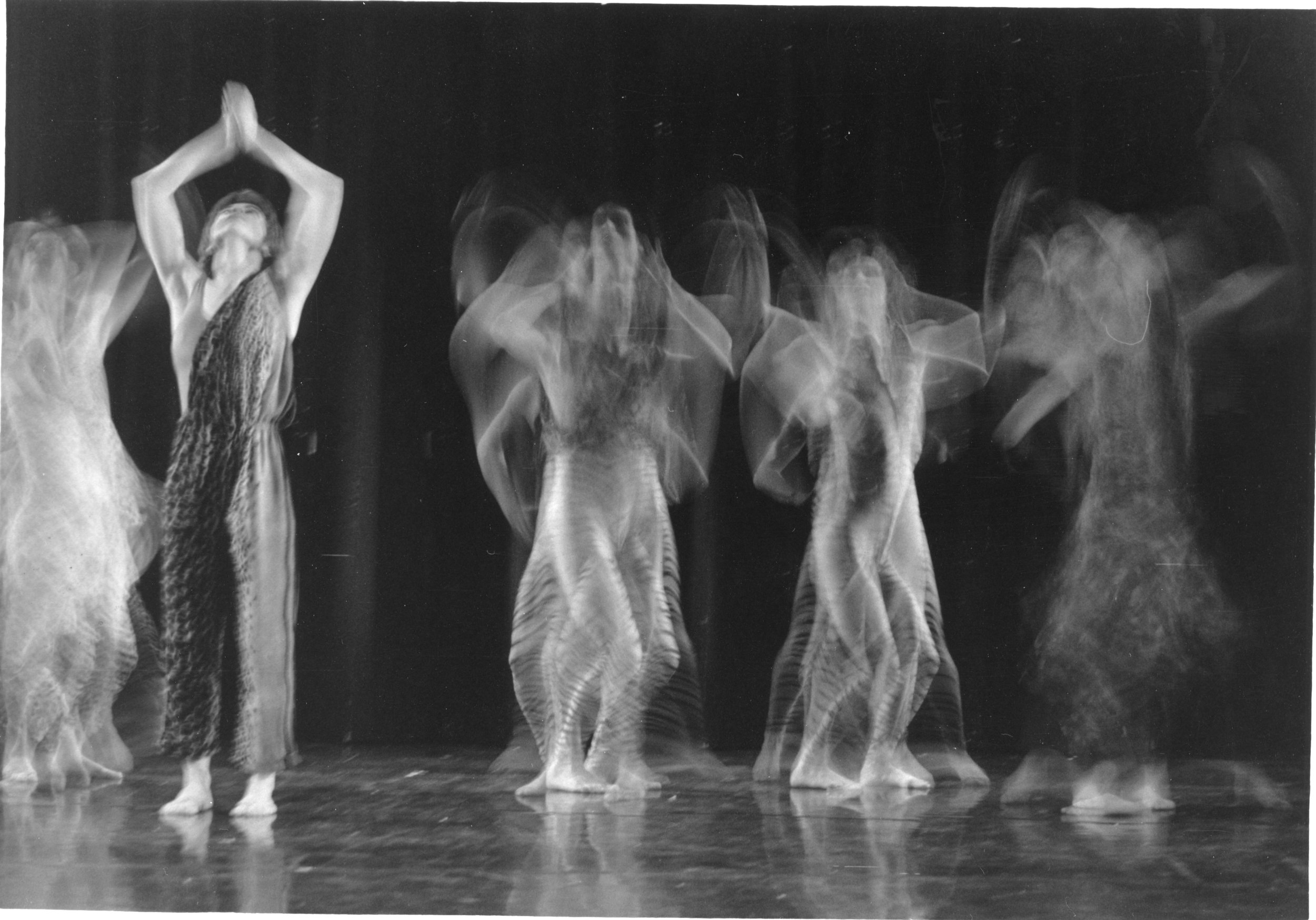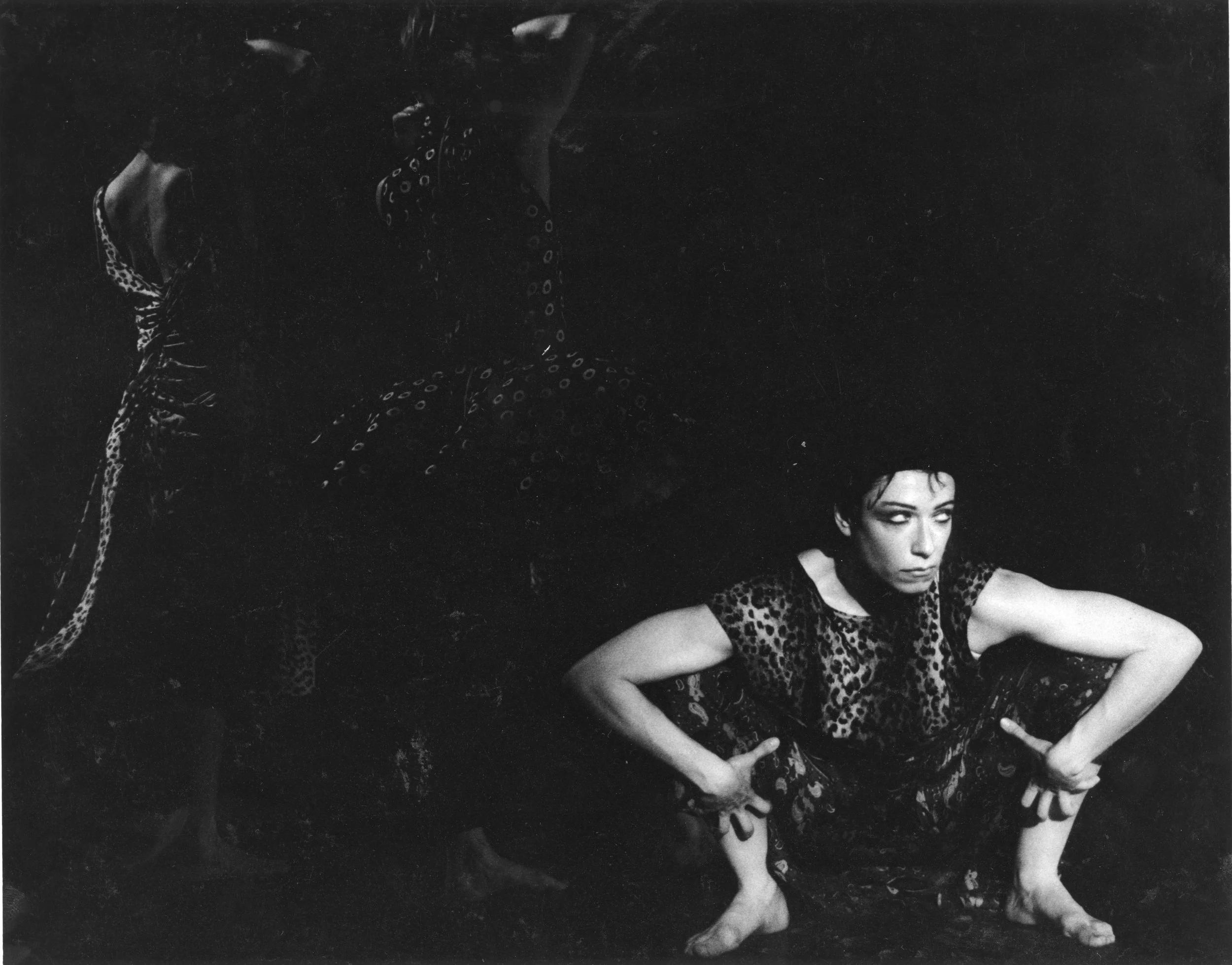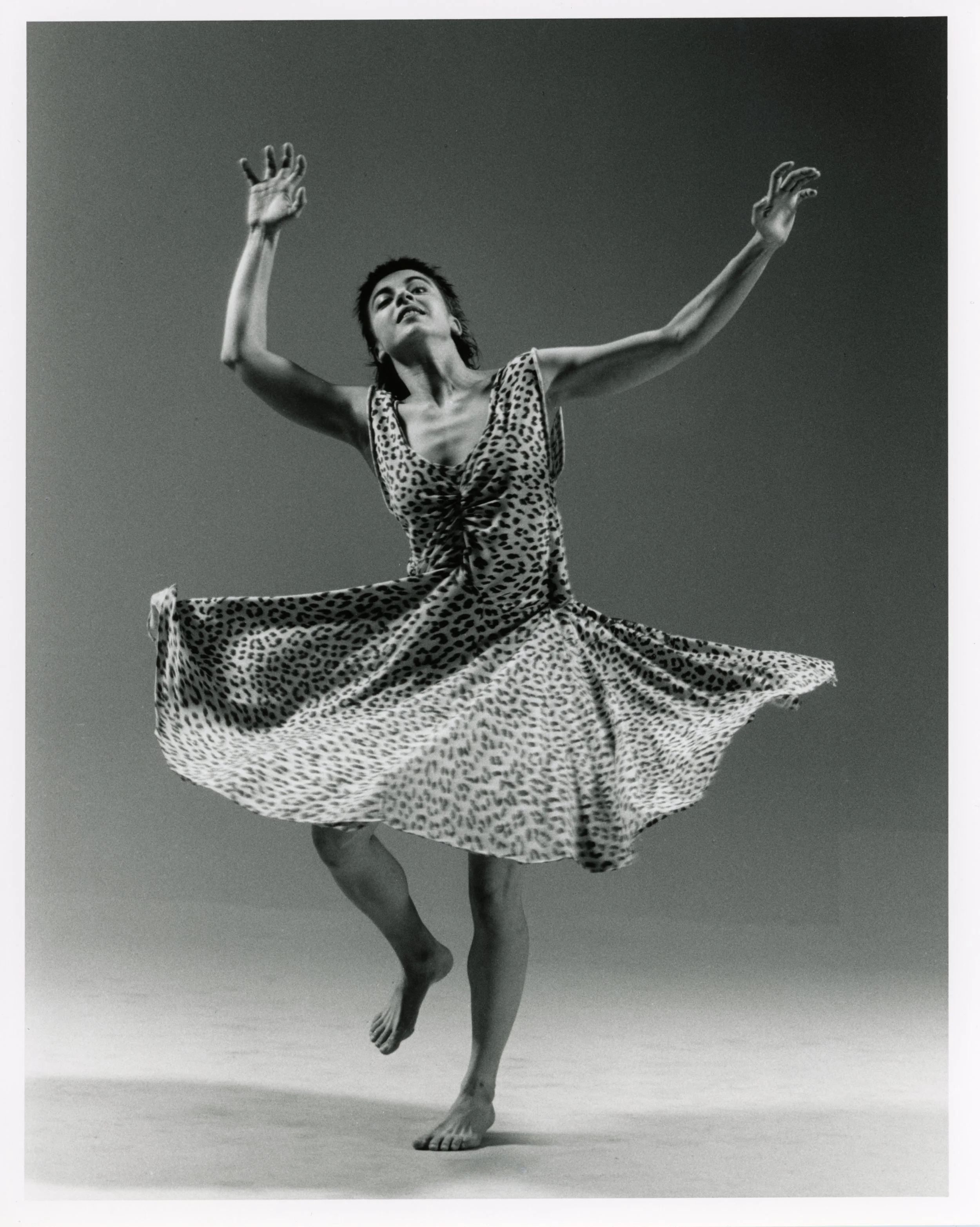Rainforest

Rainforest
1987
About
Created in collaboration with the seven dancers of the company, composers Bruce Ruddell and Sal Ferreras, writer David Peterson, sculptor Larry Cohen and photographer Robert Tinker, the piece explores the idea of the West Coast, both as a social milieu and a physical environment shaping the expression in the present and the past. The piece uses the interweaving elements of script, music, movement and sculptural design with the elation of ritual and transformation.
Rainforest premiered at the Arcadian Hall, 2214 Main Street, May 5-9 and May 12-16.
The creation of Rainforest was made possible through a special grant from the Dance Section of the Canada Council.
The People
Choreography: Karen Jamieson
Performers: Daina Balodis, Alison Crawford, Jean-Guy Cossette, Marie-France Lamoureux, Catherine Lubinsky, Alejandro Ronceria, and Janice Ungaro
Composers: Bruce Ruddell and Salvador Ferreras
Writer: David Peterson
Sculptor and Set Design: Larry Cohen
Costumes: Susan Berganzi
Photographer: Robert Tinker
Lighting Design: Ken Alexander
Premiered at the Arcadian Hall 2214 Main Street, Vancouver May 5-9 and May 12-16, 1987
Firebird Solo
Firebird Solo is a piece that was developed and appeared elsewhere, such as in the program for “Drive – Dancing on High Octane,” a show for the company’s fifth-anniversary in 1988. On a tour in April of 1990, the piece was performed by Catherine Lubinsky, with musical compositions by Bruce Ruddell and Salvador Ferreras, and costume by Susan Berganzi.
Reviews
“The work explores the aura and sensuality of the West Coast as social milieu and physical environment, as subject and inspiration shaping expression of the present and the past. The piece uses the interweaving elements of script, music, movement and sculptural design with the elation of ritual and transformation.
For Rainforest, Ruddell and Ferreras have created an original score which blends elements of primitive music, rock, and contemporary electronic sound, while David Peterson is uncovering new ways of combining dance, music and words.
The set is comprised of seven monolithic wood structures faced with reflective stainless steel.”
- The Sunday News, Coquitlam, April 19, 1987
“The dancers dance with their faces in this dance, as much as with their bodies. Frequently their tongues hang out and their eyes pop, simulating the trance-like state of the shaman and shaman masks. Jamieson is very clearly fascinated with this whole notion, which is inherent to many native myths, of humans transformed into something else or altered states of various kinds.
On the same theme, The Hamatsa dance is particularly well sketched by Jamieson in Rainforest. The Hamatsa is a dance of one possessed by spirits during which he, or in this case she, simulates cannibalism as she is calmed by her tribe. It’s very powerfully performed by Alison Crawford, who literally throws herself like a wild beast on her fellow dancers and also on several audience members, which is a word of warning to those of you who like to sit in the front row.
Now if this all sounds scary, it is indeed, and I think that’s Jamieson’s point: that these rituals, these transformations are as powerful and as mysterious as the west coast landscape that inspired them. She makes this point very emphatically near the end of the piece when she enters, as The Anthropologist, in a black business suit, her hair in a bun. She speaks into a microphone about object description files, semiotics and corporate sponsorship. It’s as if all the wildness, all of the life blood of the preceding scenes have been drained away by her scientific objectivity.
I would like to see Rainforest again and I find I often feel that way with Jamieson’s work. Rainforest is so intense, so dense with meaning that it’s hard to absorb everything on a first viewing. It is definitely not light entertainment, but if you are willing to give yourself over to its strangeness for sixty minutes or so you are likely to find yourself rewarded for your efforts.”
- Deborah Meyers
“The Afternoon Show”
CBC Radio, May 6th, 1987
“A collaboration across disciplines, its blood-raw choreography, a torrent of simplicities of then and now, underlines what the piece speaks about and celebrates – the way we and our predecessors in this remarkable environment have been influenced by it in our lives and art, the way we seem so different (and ritualize our responses in highly contrasted ways) and yet remain elementally the same in our responses to the spirits that move us.”
- Max Wyman
“A hymn to the primitive”
The Province, Vancouver, May 6, 1987
“Jamieson’s new 65-minute work, Rainforest, describes itself as ‘a celebration of an extraordinary physical environment that has, for millenaries, generated and nurtured powerful art forms and continues to manifest itself in singular expressions of its power.’
I’m not sure, however, that Rainforest quite measures up as one of these singular expressions but it packs some interesting intellectual content and it does have its moments.
And none works better than the opening where her six dancers, in animal striped and spotted costumes that could be tribal or something you wear to an underground club on Saturday night, perform some stark and simple, ritualized movements – arms overhead, hands clasped, powerful chop to the groin, strong, two-footed hops –while the Ruddell-Ferreras synthesized score pumps out blistering percussive sound.
Possession, initiation, the freedom to let go that a mask confers – Jamieson explores this in her version of the traditional Hamatsa dance. The power here is in the raw physicality of the movement of Alison Crawford as the initiate – the work is weakest when it’s being most ethnographically literal, showing cannibalism’s gory mouth, enacting the ritual purification wash.
The same goes for the storytelling section where Jamieson juxtaposes native Indian and European ballet stories – a quick sketch Swan Lake is followed by the tale of Raven and the First People – in her search for the common roots of the two cultures. The closer to mime, the less directly physical the piece’s communicative power.
I preferred the raw and reckless, 15-second, scene-shifting solo interludes by Alejandro Ronceria.
But Jamieson deserves praise for generally finding a movement language that seems a seamless blend of native and contemporary rock culture – the music video people would jump at some of this stuff.”
- Susan Mertens
“Opening routine sets good pace for Rainforest”
The Vancouver Sun, May 6, 1987
Please note that populating the Karen Jamieson Dance website with new information and images from the archives is an ongoing process that we are undertaking as fast as we can. Karen Jamieson Dance welcomes any corrections or missing information to the description and acknowledgments. These can be forwarded to admin@kjdance.ca











